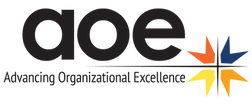Crafting enduring success through the art of long-term strategic planning
- Kathy Spanier
- May 7, 2024
- 4 min read
Updated: Jun 14, 2024
Strategic planning has always been essential to successful operation of an organization. However, too many have embarked on the planning process, only to create something that simply becomes a list of key tactics and activities, lacking the link to the bigger vision. As a facilitator for such planning processes, I have learned that an effective long-term strategic plan must begin with a compelling Vision Statement or Big Hairy Audacious Goal (BHAG). This foundational element not only navigates the organization through its industry's inevitable ups and downs but also finds the perfect synergy between ambitious aspirations and realistic achievability. It sets a daring target that accelerates innovation and encourages team-wide engagement, turning the distant future into an accessible reality and expanding what's considered possible today for tomorrow's achievements.
Fueled by the wisdom imparted by Francis Wade in his seminar, "Jumping Hurdles: How Leaders Craft Their Long-Term Strategic Plans," as well as my own experience, the following details key concepts to consider when embarking on the planning process.
Vision Statement or BHAG
Crafting a Vision Statement or BHAG is an exercise in balancing the aspirational with the achievable. This crucial element should not only stretch the capabilities of the organization but also remain firmly grounded in realism. A well-articulated vision acts as a horizon, encouraging innovation and flexibility, fostering an environment where thinking outside the conventional parameters becomes the norm. The essence of a Vision Statement or BHAG transcends the mere pursuit of short-term achievements; rather, it is a declaration of the organization's commitment to enduring greatness over the span of decades. This long-term perspective is vital, enabling leaders to anticipate future obstacles and opportunities with a clarity that informs strategic direction and decision-making.
The key, however, lies in drafting a statement that is clear enough to guide yet bold enough to inspire – a challenge that demands a profound understanding of both the organization's intrinsic capabilities and the external market forces. To create a compelling vision, start first by gathering input from stakeholders such as employees, customers and partners. Next, analyze the external environment, including market trends and competitive landscape, to identify opportunities and challenges. Then, determine the organization's core competencies and values, ensuring the vision reflects its identity and competitive advantages. After it is formulated and then socialized and “tested” by your stakeholders, it should be communicated across the organization, embedding it into strategy, culture, and decision-making processes.
Breaking Down the BHAG into Actionable Strategies
With your BHAG in place, it is time to set strategy! A panoramic goal may seem daunting at first glance, but deconstructing it into manageable, quantifiable milestones transforms the seemingly insurmountable into something tangible. This segmentation is at the core of an effective strategic plan; it serves as a roadmap, demarcating the incremental achievements necessary to eventually realize the overarching vision.
However, the world is anything but static. It is here that a detailed situational analysis becomes indispensable. Employing tools like the SWOT analysis and Porter’s Five Forces model equips leaders with a nuanced understanding of both the internal and external factors that could impact the strategic plan. This depth of analysis ensures that strategies are not only robust but also agile, capable of adapting to the shifting landscapes of the market.
Another key to success is engaging stakeholders. Strategic planning is not a solitary pursuit; it thrives on the collective insights and energies of a broad spectrum of team members and even outside influencers. Engaging employees, customers, partners and even competitors in the planning process enriches the strategic discourse, ensuring that the final plan is reflective of a diverse array of perspectives and needs. This inclusive approach not only enhances the quality and realism of the strategic plan but also nurtures a strong sense of ownership and commitment across the organization, essential ingredients for successful implementation.
Flexibility must also be considered as it is adaptability that allows organizations to pivot and reorient strategies in response to unforeseen challenges, disruptions, or opportunities. This capability to modify and adjust strategic directions is not about deviating from the ultimate goal but rather ensuring its achievement by being responsive to the dynamic market conditions. The imperative of flexibility is underscored by the fact that no prediction can be perfectly accurate; economic downturns, technological breakthroughs, competitive maneuvers, or even global events like pandemics can swiftly render a once-solid plan obsolete. Thus, a strategic plan must be a living document, one that breathes and evolves with the passage of time. It should be subject to regular review and reassessment, with built-in mechanisms for feedback and course-correction. This iterative process not only refines the strategic plan but also embeds a culture of agility within the organization, enabling it to weather storms and seize the winds of opportunity with equal prowess.
In essence, flexibility within strategic planning embodies the recognition that the path to long-term success is not linear but rather a series of calculated adjustments and adaptations. It's about maintaining the clarity of the ultimate vision while navigating the complex and unpredictable reality of business and economic landscapes.
Getting Started
Strategic planning is a discipline that blends analytical rigor with creative foresight. However, key to success is engagement, flexibility and of course starting off with that shared vision. For expert guidance on crafting and implementing a comprehensive, resilient long-term strategic plan, contact AOE today. Together, we can chart a course toward a future marked by sustained growth and enduring success.
.png)